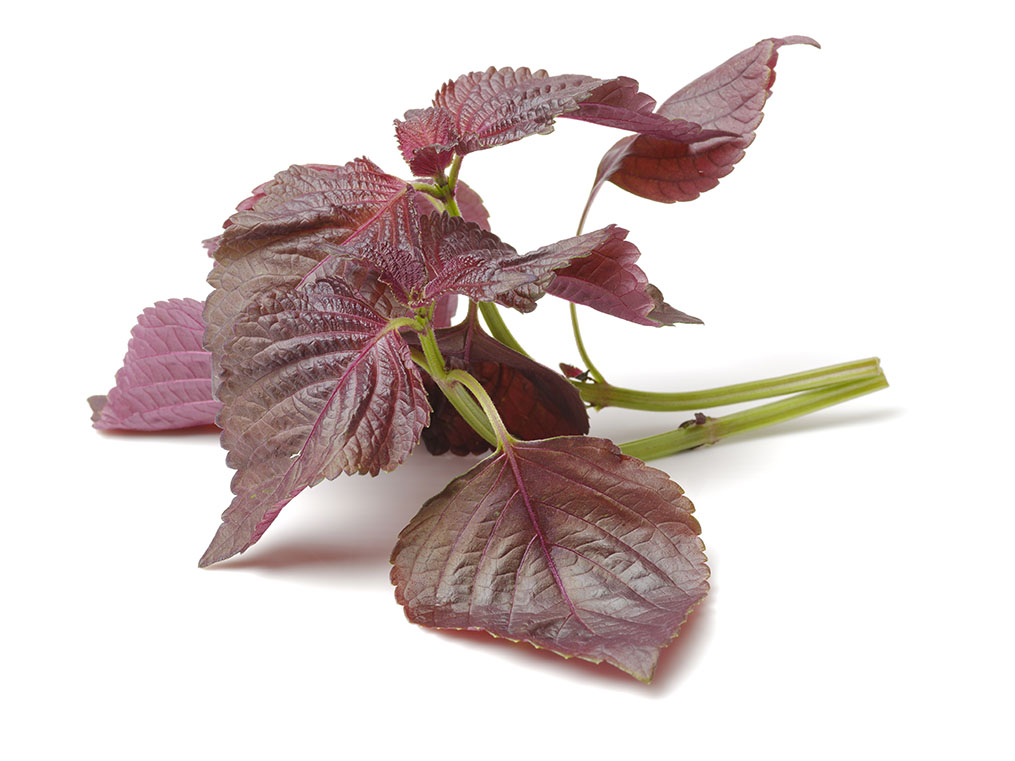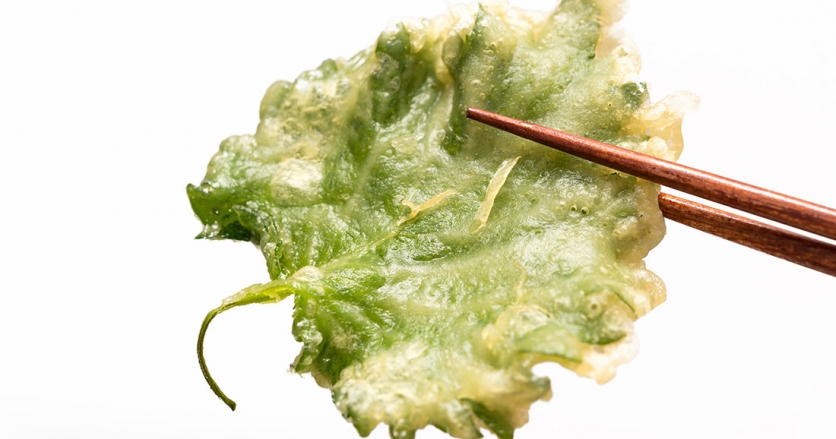Growing Shiso
If you’re looking for something a little more unusual to grow in your herb garden this year, shiso fits the bill. It has as many monikers — perilla, Chinese basil, wild sesame and rattlesnake weed — as it does flavours. A member of the mint family, shiso can taste grassy with hints of citrus and herbal notes of cumin, clove, basil and mint. Its complex flavour makes the herb a culinary chameleon that pairs well with various dishes. It complements tuna and sushi. The young tender leaves can be used raw in salads, while larger leaves can wrap meat or rice or be chopped into stir-fries. When the flowers appear in summer, their blossoms are sweet and floral.
Shiso isn’t something you can easily find at the grocery store. A few farmers in the region offer shiso, including Bao Bao Farm, featured on page 37. But if you’ve seen shiso at all, it was most likely on the side of a plate of sashimi or a plastic replica found on sushi trays. The herb is native to southwest China, Nepal and northern India and has been consumed as food and medicine since 500 AD. Historically, the seeds were favoured for their oil and were ground with chilis and tomatoes as a condiment. The red variety gives the pink colouring to umeboshi, a sour and salty Japanese pickled plum.
If you add shiso to your garden, give it some extra space. Like mint, shiso grows easily and is a prolific self-seeder, unlike mint’s invasive roots. There are several types of shiso you can plant: green shiso (Aoshiso), red shiso (Akashiso) and a bi-coloured variety (Hojiso) with leaves that are green on top and red underneath. All three varieties like a warm, sunny spot and soil with good drainage. I’ve also noticed that shiso takes longer to show up in the spring than the other self-seeding and perennial herbs. When it decides to pop out of the ground, and the leaves develop, shiso can be quite stunning — particularly the red and bi-coloured varieties.
Shiso tempura
Adapted from the recipe by Matt Hodder, published in edible Ottawa's January 2016 issue.
If you enjoy making and eating tempura, shiso is a great addition to your usual repertoire. The firm leaves make them easy to dip and the flavour is a great compliment to other vegetables you are cooking.
Shiso leaves, washed and dried
Tempura batter
1 egg
1 cup ice cold water
¾ cup cake or all-purpose flour
¼ cup cornstarch
2-3 cups neutral oil for frying
Tentsuyu (tempura dipping sauce)
1½ cups dashi or vegetable stock
2 tablespoons light soy sauce
2 tablespoons mirin
Salt and sugar, to taste
Combine all of the tentsuyu ingredients in a small saucepot. When the mixture reaches a simmer, turn it off. Season to taste. Reserve.
In a pot, heat the oil to 350 F, making sure the oil is a couple inches in depth and the pot is deep enough for deep-frying. While the oil is heating, make the batter. It’s important that the batter be the last component assembled before frying, to ensure a light, crisp tempura.
In a bowl, beat the egg then add the ice water and mix thoroughly. Add flour and cornstarch in one shot. Using chopsticks or a small whisk, mash or chop at the batter, making sure to not over mix — do not stir. Overmixing develops the glutens and results in a bread-like, doughy, finished product. Instead, it should be runny and lumpy, with visible bits of unmixed flour in the batter and around the edge of the bowl.
Dip the shiso leaves into the tempura batter, then drop them in the hot oil. Be careful not to crowd the pot. Cook the tempura for two to three minutes or until the batter is golden and has floated to the top.
Remove the tempura from the pot and place it on a drying rack or paper towel. Serve immediately with tentsuyu.






